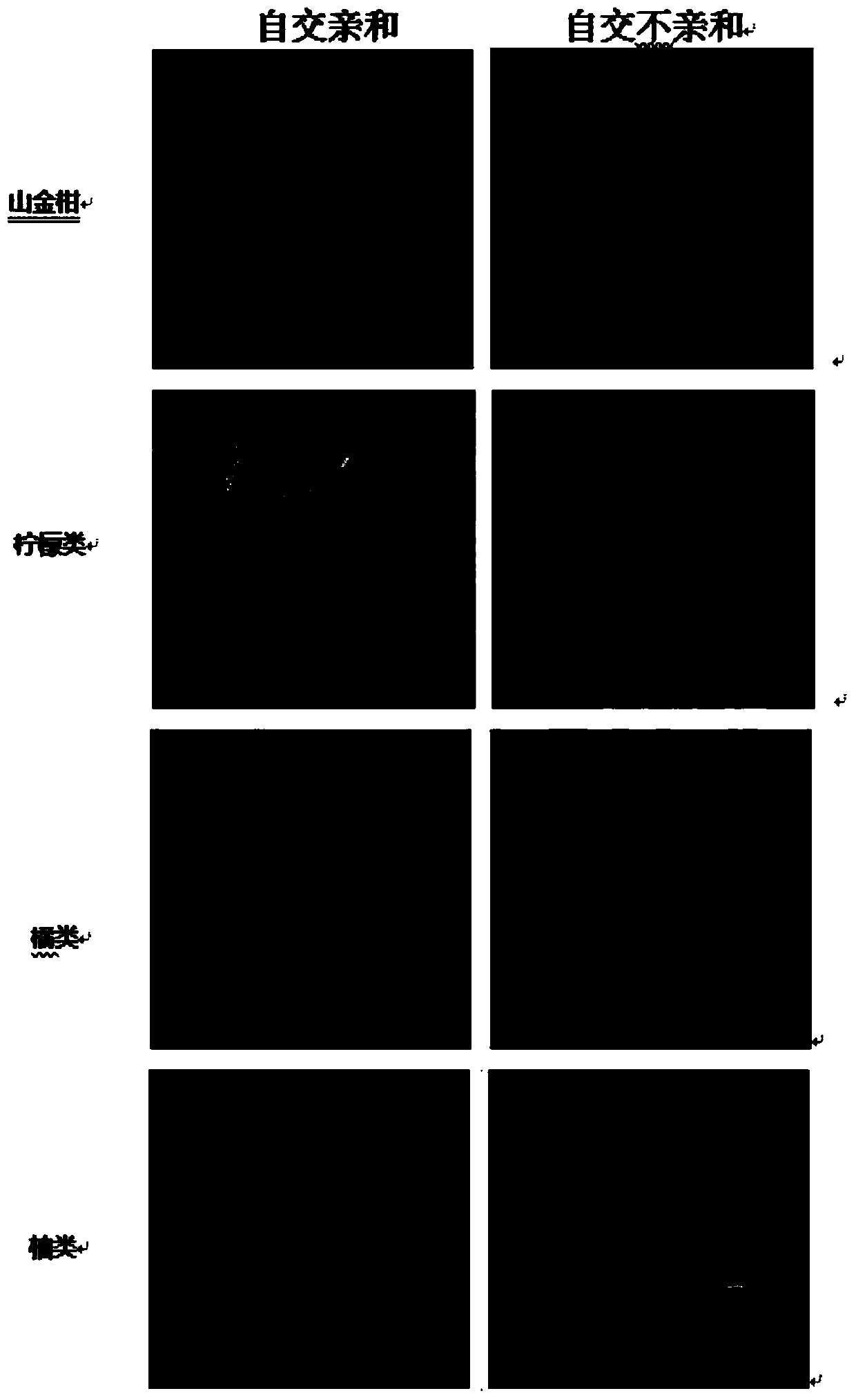Method of quickly identifying whether living citrus are self-compatible
A citrus, fast technology, applied in the field of identification of citrus self-compatibility, can solve the problem of aniline blue sampling time staining and other times that have not been systematically reported, and achieve accurate and efficient identification
- Summary
- Abstract
- Description
- Claims
- Application Information
AI Technical Summary
Problems solved by technology
Method used
Image
Examples
Embodiment Construction
[0030] The principles and features of the present invention will be described below, and the examples given are only used to explain the present invention, not to limit the scope of the present invention.
[0031] 1. Material selection
[0032] Select 8 citrus varieties as materials to be tested, as shown in Table 1.
[0033] Table 1 Eight citrus materials to be tested
[0034]
[0035] 2. Pollen collection
[0036] The flowers of the above 8 kinds of citrus materials are collected, the anthers are picked and collected on clean filter paper or white paper, and dried in an oven at 28°C for 12 hours to disperse the anthers and collect them in a centrifuge tube.
[0037] 3. Pollen vigor identification
[0038] Prepare the citrus plant pollen germination medium, as shown in Table 2, adjust the pH to 6.0 and not exceed 6.2. Add the culture medium to the cap of the 1.5ml centrifuge tube, and then evenly distribute 8 kinds of citrus pollen on the surface of the culture medium. Be careful not to...
PUM
 Login to View More
Login to View More Abstract
Description
Claims
Application Information
 Login to View More
Login to View More - R&D
- Intellectual Property
- Life Sciences
- Materials
- Tech Scout
- Unparalleled Data Quality
- Higher Quality Content
- 60% Fewer Hallucinations
Browse by: Latest US Patents, China's latest patents, Technical Efficacy Thesaurus, Application Domain, Technology Topic, Popular Technical Reports.
© 2025 PatSnap. All rights reserved.Legal|Privacy policy|Modern Slavery Act Transparency Statement|Sitemap|About US| Contact US: help@patsnap.com



